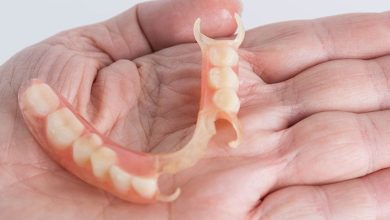Endocarditis (Infective Endocarditis, Heart Infection)

Endocarditis is an inflammation of the lining of the heart valves that is most often caused by infection. Most people who develop this condition already have heart problems and are over 60 years old, but it can occur at any age, including in children. While not very common, this can be a very serious disease. Men are more likely to be affected than women.
There are two types of endocarditis: infective and non-infective. With prompt treatment, the majority of people with infective endocarditis will survive. Non-infective endocarditis is more difficult to treat.
Table of Contents
Causes
Some people are more likely than others to develop endocarditis. The following conditions increase the risk:
- a history of rheumatic fever or rheumatic heart disease
- a history of endocarditis
- a congenital (present at birth) heart defect
- prosthetic (artificial) heart valves
- a history of intravenous drug use
- mitral valve prolapse (MVP)
- diabetes
- poor dental hygiene or dental infection
- chronic hemodialysis
- coagulation disorders (e.g., antiphospholipid antibody syndrome)
Endocarditis develops in the endocardium, the inner tissue of the heart. It starts if this tissue has been damaged, injured, or infected. Much as a cut on the skin causes a scab to form, damage to the endocardium can lead to the formation of a blood and tissue clot (thrombus).
In acute infective endocarditis, the clots are caused by bacterial or fungal infection, inflaming and damaging the heart cells.
The infection reaches the heart through blood that’s carrying a concentration of bacteria, a condition called bacteremia. Once the infectious agent reaches the heart via the blood, it tends to concentrate around the valves the blood’s point of entry and exit. Despite the name, infective endocarditis isn’t contagious.
The infecting agent can get into the blood through:
- dental work and surgery
- an infected cut on the skin
- injecting drugs into veins
- being fitted with artificial heart valves
- a surgically implanted vascular access device (e.g., a PICC line, Hickman line, or Port-a-Cath)
In non-infective endocarditis, the clot may not be infected but interferes with heart valve function anyway. Some conditions make the formation of scar tissue on the heart valves more likely:
- congenital heart valve disease
- systemic lupus erythematosus (an autoimmune disease)
- chronic infections like tuberculosis and pneumonia
- lung cancer
- having had a previous bout with rheumatic fever
What are the symptoms of endocarditis?
The symptoms of endocarditis aren’t always severe, and they may develop slowly over time. In the early stages of endocarditis, the symptoms are similar to many other illnesses. This is why many cases go undiagnosed.
Many of the symptoms are similar to cases of the flu or other infections, such as pneumonia. However, some people experience severe symptoms that appear suddenly. These symptoms may be due to inflammation or the associated damage it causes.
Common symptoms of endocarditis include:
- heart murmur, which is an abnormal heart sound of turbulent blood flow through the heart
- pale skin
- fever or chills
- night sweats
- muscle or joint pain
- nausea or decreased appetite
- a full feeling in the upper left part of your abdomen
- unintentional weight loss
- swollen feet, legs, or abdomen
- cough or shortness of breath
Less common symptoms of endocarditis include:
- blood in your urine
- weight loss
- an enlarged spleen, which may be tender to touch
Changes in the skin may also occur, including:
- tender red or purple spots below the skin of fingers or toes
- tiny red or purple spots from blood cells that leaked out of ruptured capillary vessels, which usually appear on the whites of the eyes, inside the cheeks, on the roof of the mouth, or on the chest
The signs and symptoms of infectious endocarditis vary greatly from person to person. They can change over time, and they depend on the cause of your infection, heart health, and how long the infection has been present.
If you have a history of heart problems, heart surgery, or prior endocarditis, you should contact your doctor immediately if you have any of these symptoms. It’s especially important to contact your doctor if you have a constant fever that will not break or you’re unusually tired and don’t know why.
How is endocarditis treated?
Antibiotics
If your endocarditis is caused by bacteria, it will be treated with intravenous antibiotic therapy. Your doctor will advise you to take antibiotics until your infection and related inflammation are effectively treated. You will likely receive these in a hospital for at least a week, until you show signs of improvement.
You will need to continue antibiotic therapy upon discharge from the hospital. You may be able to transition to oral antibiotics later in your treatment. Antibiotic therapy typically takes up to six weeks to complete.
Surgery
Prolonged infective endocarditis or damaged heart valves caused by endocarditis may require surgery to correct. Surgery may be done to remove any dead tissue, scar tissue, fluid buildup, or debris from infected tissue. Surgery may also be done to repair or remove your damaged heart valve, and replace it with either man-made material or animal tissue.
For any important information please contact us Email GadgetsNg info@gadgetsng.com
[Button id="1"]




Hello it’s me, I am also visiting this website on a
regular basis, this website is actually nice and the viewers are really sharing nice thoughts.
world pharmacy india http://indiaph24.store/# indian pharmacy
Online medicine home delivery